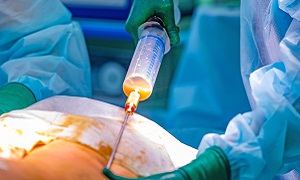Fat Grafting
Fat Grafting also referred to as fat transfer, is a procedure for transferring fat from one area of the body to a different area. The goal of this procedure is to improve or augment the area where the fat is injected.
The technique has been used since the 1990s by plastic surgeons for improving and enhancing the appearance of the face, hands, breasts, feet, etc. The procedure also has been shown to have benefits in the healing of wounds and scars.
Fat grafting procedures date back to the 19th century, though during the next century, it had quite a lot of trouble gaining acceptance due to the complications that accompanied the procedure since modern liposuctions had not yet been developed. Today, this procedure is well-established as during the 1990s, several papers were published where standardized techniques for fat extraction, processing and infection were published.
Purpose
Fat grafting can be done for multiple purposes:
Facial Face Grafting- Human faces tend to develop wrinkles over time due to various reasons. Facial fat grafting can help one to overcome the effects of this natural process.
Breast Reconstruction- In the breasts, fat grafts can be used for correcting any deformities along the contour lines such as those which can arise following partial mastectomies or lumpectomies.
Post-traumatic fat grafting- Sometimes, voids are generated which create deformities in various parts of your body after a trauma or surgery. This can happen after neurosurgery. Fat grafting may be used to correct any such defects that generally occur in the legs, arms, or the skull.
Fat grafting has a few advantages:
- The procedure uses your own tissue instead of using an implant.
- Fat can be removed from a part of your body, where you don’t want it.
Preparation
Your surgeon will first need to perform a physical exam to determine your fitness for this procedure. He/she will also answer any questions that you might have and also examine your medical history. He/she might also need to take photos.
He/she might ask you to:
- Stop smoking at least six weeks before the procedure to avoid poor wound healing and scarring.
- Avoid taking certain medications.
- Maintain proper hydration
- Arrange for someone to drive you home safely after the procedure is complete
Procedure
Your procedure may be performed in a hospital or a surgical center. How long the procedure takes generally depends on how much fat needs to be removed, and the number of liposuction sites. For example, you will need less fat for facial fillers as compared to your breasts or buttocks.
Local anesthesia is generally used so that you will not be feeling any pain during the procedure.
The procedure will involve harvesting fat from one part of your body, after which it will be washed, purified, and injected carefully into the areas that need the augmentation. The fat grafting procedure might be required several times before one can achieve the desired results.
First, a site is selected for fat removal. This site is then injected with a local anesthetic. Then your surgeon creates a small incision in the area for fat removal and with the help of a sterile technique, the cannula is connected to a syringe for carefully extracting fat.
After enough fat is obtained from the donor area, the surgeon processes it to prepare the fat cells for small syringes that are going to be used for fat injection.
The area which will receive the graft is then going to be prepared. Your surgeon will need to insert a needle or cannula into the incision point of the area receiving the graft.
Each time the cannula or needle is withdrawn, a line of fatty tissue parcels is carefully deposited. This process is continued until the desired correction has been made and a grid of grafted fat has been created.
There are some surgeons who might recommend massaging the grafted areas as this can create a satisfactory contour. After the procedure, the surgeon will most likely place a bandage or dressing over the grafted area.
Aftercare & recovery
After the procedure, you should discuss with your doctor how long will it take for you to recover. Ask him/her when it is okay for you to resume your normal activities. You will also receive a few detailed instructions regarding your post surgical care.
The treated areas will be rather swollen immediately after the procedure, especially the lips if they were treated. It is therefore, quite important to use a cold pack and compress it in the first few hours so that the swelling can be minimized.
The swelling may increase till the third day, but after that, it should gradually subside. After around ten days patients generally feel confident about going out and resuming their normal social lives. If any bruises had developed, they might remain visible for some time, but with makeup, they can be hidden.
It is advisable for patients to have a check-up with the surgeon after five to seven days and again after three weeks.
How long the fat grafting lasts will depend on the surgeon’s skills, how the fat was harvested and purified and how and where it was injected. For the procedure to be a success, it is important that it is performed by a surgeon with proper skill and experience.
Risks
Though significant complications are rare, they can include:
- Adverse reaction to the anesthesia
- Hematoma or seroma (an accumulation of blood or fluid under the skin that can require removal)
- Infection
- Damage to underlying structures
- Changes in sensation
- Scarring
- Allergic reactions
- Unsatisfactory results that may lead to the requirement of additional procedures


